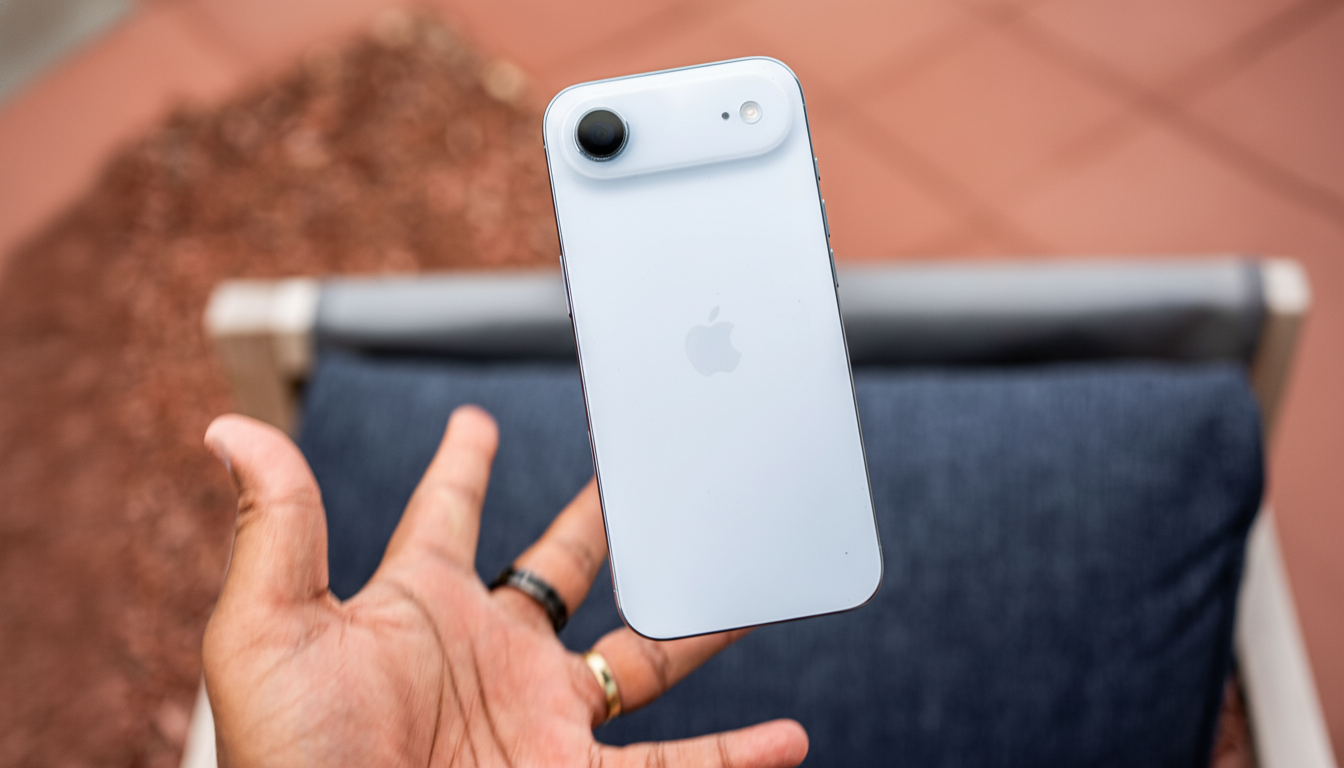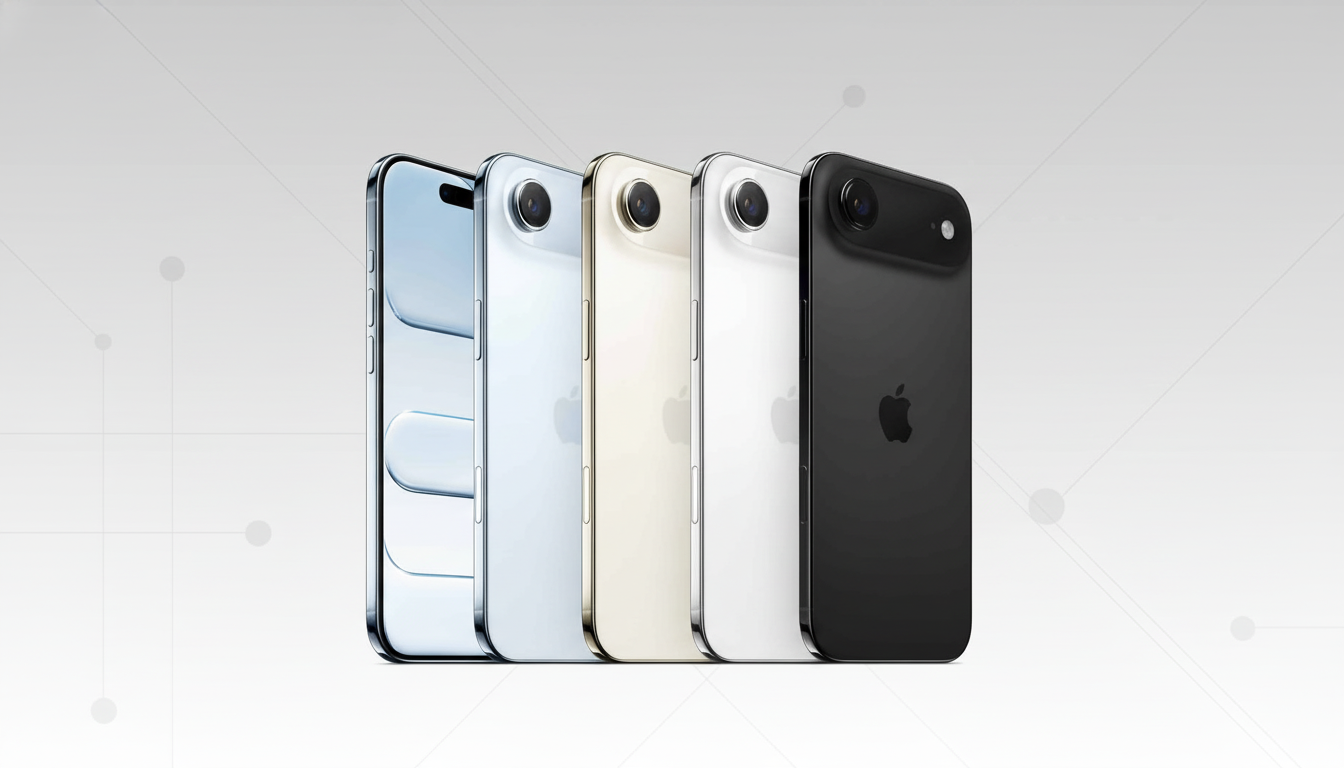Apple aimed to make thinness interesting again with the iPhone Air. So far, it appears buyers aren’t biting. Several supply chain checks point to demand being much softer than anticipated, and production has supposedly transitioned towards the regular iPhone 17 & iPhone 17 Pro where there is actually still very high interest.
What the Supply Chain Is Saying About iPhone Air Demand
A Nikkei report, citing suppliers, says that the share of new-model output (for iPhone Air) was initiated at 10% to 15% but has been pulled back near wind-down levels. One supplier said that orders from November onward had fallen to less than a tenth of September volumes—an aggressive recalculation typical only when the product mix is obviously not matching demand.

Lead times provide a second clue. Though some iPhone 17 Pro options still show a one- to two-week time for delivery, and several iPhone 17 configurations are now stretching into week three, the iPhone Air appears to be generally available for immediate shipment in all colors. Shipping estimates are hardly a perfect proxy, but when supply lines seem the most open for the thinnest new iPhone model, it at least suggests that inventory has gotten out in front of orders.
Why Thin Loses to Battery Life and Camera Features
The pitch for the iPhone Air is simple: Your thin-and-light phone should still feel flagship. The trade-offs are equally direct. A thinner body naturally limits a battery’s capacity and camera modules. It’s a lot to ask of the upgrade cycle during which most shoppers buy based on battery life and camera quality.
Consumer surveys conducted by companies like CIRP and Counterpoint have regularly cited battery life and camera performance as two of the most important upgrade factors for top-tier phones. That list of priorities already puts the iPhone Air in a bind. Its lower battery life and fewer photographic choices may encourage buyers to spring for the iPhone 17 Pro or stay on the mainstream iPhone 17 at an even cheaper price.
Pricing context matters, too. And if the iPhone Air is squashed between standard and Pro tiers, it faces a squeeze: too unaffordable to be much of a value play, pretty underpowered for enthusiasts. Apple has trodden this pricing middle ground before, and it’s almost never easy.
A Familiar Trend for Apple’s iPhone Lineup
Apple has history here. The iPhone 12 mini and 13 mini won cheers but sold poorly, apparently drifting off into the night as buyers gravitated toward larger screens and bigger batteries. The iPhone 14 Plus started sluggish yet soon found its place in a niche market, but the greater lesson couldn’t be missed: The mass-market demand favors tangible usefulness over design experiments.

Over the last few cycles, analysts have observed a Pro-heavy revenue mix, where the high end is pulling down an outsized share of value with unique camera solutions, displays, and materials. And if the iPhone Air reeks of luxury, yet compromises where it matters, it has to establish itself in a field that’s broad but whose competitive landscape is well-defined at either end.
Supply chain dynamics reinforce that narrative. When Apple sees outsize traction for particular SKUs, it can quickly turn the spigot on components and assembly. The rumored cuts in iPhone Air production and increases for iPhone 17 and 17 Pro would indicate that Apple is optimizing around what customers are actually buying.
What It Means for the iPhone Air in Today’s Market
That’s not to say the iPhone Air is a bad product. Holding one in your hand, an ultrathin iPhone is precisely the type of industrial design stunt that has defined Apple. But there’s only so fast thinness as a mass-market proposition can outrun core performance priorities. Unless Apple can counter the physics of it through advances in battery tech, more efficient displays and so on—maybe by fielding a camera package that feels less compromised—the Air may stay the niche choice.
Expect Apple to iterate. It might move the Air’s price point, highlight features exclusive to one of them that don’t hit your battery life (special materials, on-device AI features) or slim down its portfolio so that the two products aren’t ordering a pulled pork sandwich. The company has continued to prune models that may water down the lineup’s story, and a more focused narrative generally leads to better sales distribution.
For now, the market message is blunt: Buyers value endurance and imaging over a millimeter saved. The iPhone Air may continue to win design awards and still maintain a dedicated subset of users, but the sales charts are more typically rewarding devices that don’t compromise as much—even if they’re a bit thicker in the pocket.

